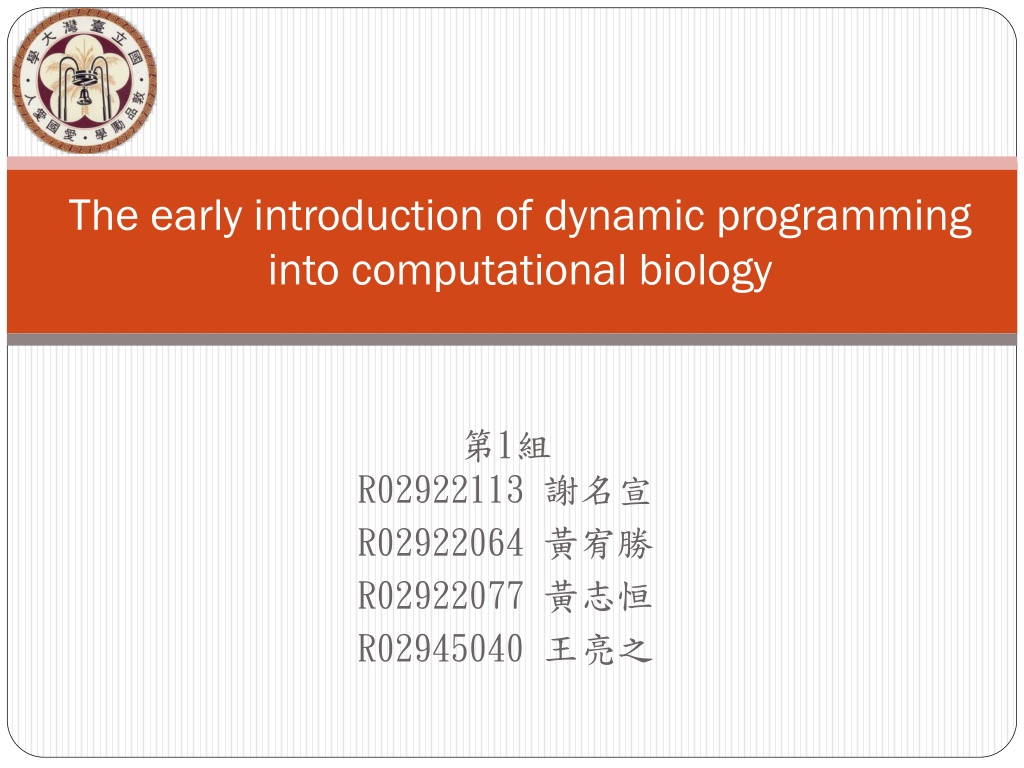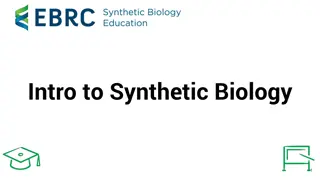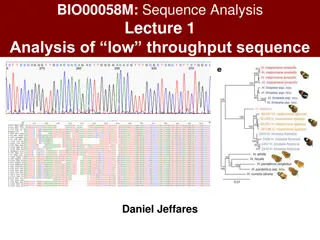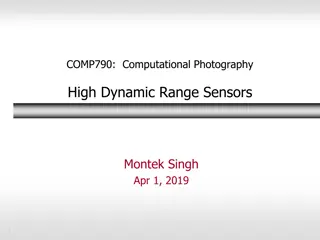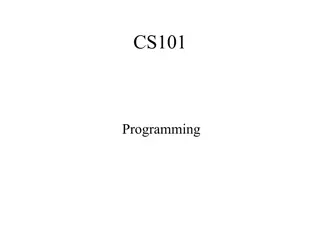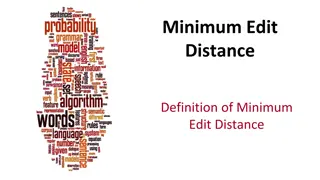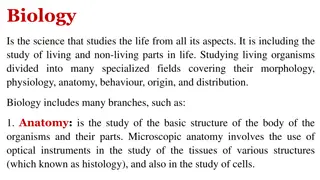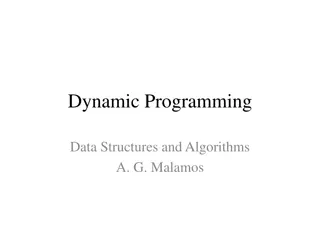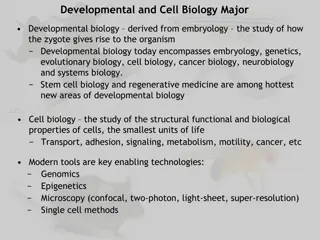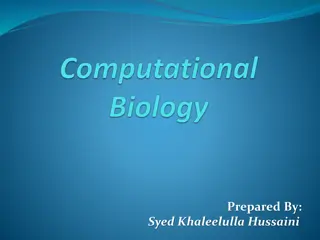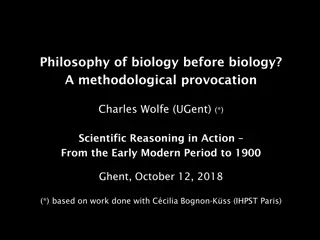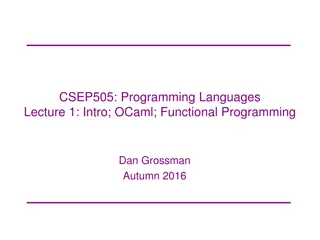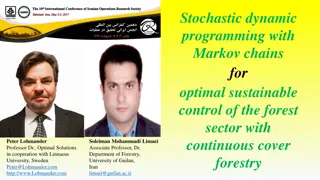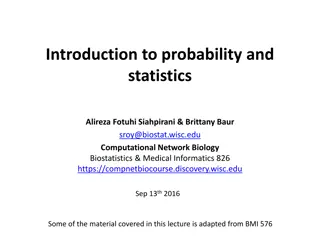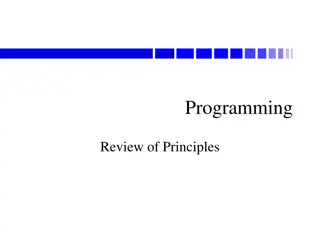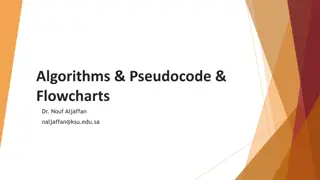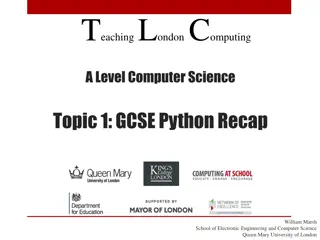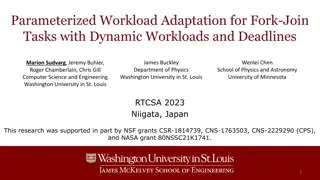The Early Introduction of Dynamic Programming in Computational Biology
The early integration of dynamic programming in computational biology, spearheaded by David Sankoff, revolutionized sequence comparison, multiple alignment, and phylogeny analyses. Sankoff's pioneering work in the 1970s laid the foundation for bioinformatics, recognizing the key role of algorithm design in advancing RNA sequence alignment techniques.
Download Presentation

Please find below an Image/Link to download the presentation.
The content on the website is provided AS IS for your information and personal use only. It may not be sold, licensed, or shared on other websites without obtaining consent from the author.If you encounter any issues during the download, it is possible that the publisher has removed the file from their server.
You are allowed to download the files provided on this website for personal or commercial use, subject to the condition that they are used lawfully. All files are the property of their respective owners.
The content on the website is provided AS IS for your information and personal use only. It may not be sold, licensed, or shared on other websites without obtaining consent from the author.
E N D
Presentation Transcript
The early introduction of dynamic programming into computational biology 1 R02922113 R02922064 R02922077 R02945040
Reference The early introduction of dynamic programming into computational biology. David Sankoff 2000 Bioinformatics, 16 , 41-47.
Outline Introduction Dynamic programming for sequence comparison Multiple alignment and phylogeny Secondary structure
Introduction of writer David Sankoff David Sankoff currently holds the Canada Research Chair in Mathematical Genomics at the University of Ottawa. He studied at McGill University, doing a PhD in Probability Theory with Donald Dawson. He joined the new Centre de recherches math matiques (CRM) of the University of Montreal in 1969 and was also a professor in the Mathematics and Statistics Department from 1984 2002. He is one of the founding fathers of bioinformatics whose fundamental contributions to the area go back to the early 1970s.
Introduction of writer In 1971, Cedergren asked Sankoff to find a way to align RNA sequences. Sankoff knew little of algorithm design and nothing of discrete dynamic programming, but as an undergraduate he had effectively used the latter in working out an economics problem matching buyers and sellers. The same approach worked with alignment. http://www.centrerc.umontreal.ca/images/BobDavid2.png
Introduction In 1994-1995, DIMACs sponsored a theme year on computational biology. As a participation in a workshop which organized by Alberto Apostolico and Raffaele Giancarlo, Sankoff led to consider some of the early interactions in the field now known as computational biology. After reading a paper by Walter Goad on the impact of Stanislaw Ulam in this field, puzzled Sankoff greatly.
Introduction Ulam: I started all this .
Introduction Sankoff had also read a joint interview of Ulam and Mark Kac, led him to reflect on this misperception on the part of Ulam, and to crystallize the realization that ironically, Kac, his colleague of many year, had play a crucial in the earliest development of the field. This paper is dedicated to the memory of Mark Kac.
Introduction In this article, Sankoff will draw on his recollections of the earliest phases of the field to describe how certain fundamental ideas found their ways into the vernacular of the computational biologist.
Dynamic programming for sequence comparison
Longest common subsequence Maximum matching Recurrence relation 2 sequence of length m and n of terms from any alphabet The 2 sequences are a(1), ,a(m) and b(1), ,b(n) Use ??for the prefix sequence a(1), ,a(i) and M(i,j) for the longest common subsequence of ??and ??
Longest common subsequence initial condition M(i,0) = M(0,j) = 0 The length of the longest common subsequence M(m,n) All longest common subsequence Traceback routine on the matrix M
Edit distance Stanislaw Ulam Sequence comparison problem Dynamic Programming-Sellers Maximum matching Cubic computing time Can be done in quadratic time
Edit distance Using D(i,j) for the minimum number of steps to convert ??to ??
Edit distance initial condition D(i,0) = D(0,i) = i The edit distance between the two sequences D(m,n) All appropriate sets of edit steps Traceback routine on the matrix D
Generalization A different weight s>0 The longest common subsequence problem and the shortest edit distance problem become essentiall identical When s 2
Optimal local alignment Smith and Waterman Dynamic Programming Simple Not-obvious
Optimal local alignment initial condition L(I,0)=L(0,i)=0 The score of the optimal local alignment between the two sequences Max?,?L(i,j) All appropriate sets of edit steps Traceback routine on the matrix L
Multiple alignment and phylogeny Cedergren and Sankoff became interested in assessing the relative rates of 12 possible substitution mutations among the four based {A,C,G,U} Idea: Isolate each position in the RNA Count the number of mutations Combine the data of all positions
Multiple alignment and phylogeny The only task: Align corresponding positions in all sequences Count the number of mutations in all positions ? ? = ???? {0,1}?{? ? ? + ?(? ?(?))}
Multiple alignment and phylogeny Sankoff published a short paper with Cedergren and his student Cristiane Morel (Sankoff et al., 1973) Significant of the paper Mutation frequencies Reconstruction of the ancestral sequence Formal algorithm for multiple sequence alignment
Multiple alignment and phylogeny Sankoff rushed off a manuscript containing this algorithm to Mark Kac, and requested him to communicate it to PNAS After waiting for 6 month for a reply from Kac Not good enough for some cases Should optimize the tree topology simultaneously Published his algorithm elsewhere (Sankoff, 1975)
Secondary structure Stem Given two regions a(i), ..,a(i+h) a(j), ..,a(j-h) For h=0, k a(i+5) a(j-5) a(i+4) a(j-4) a(i+3) a(j-3) a(i+2) a(j-2) a(i+1) a(j-1) a(i) a(j)
Secondary structure R-loops Given a(ir), .., a(kr) are all unpaired For r=1, ..,R R=1 a(i1) a(k1) R= 1 = Hairpin R= 2 = Interior loop R 3 = Multiple loop Special case ex:bugle (R=2) R=2 a(k2) a(i2)
Secondary structure R-loops Given a(ir), .., a(kr) are all unpaired For r=1, ..,R R= 1 = Hairpin R= 2 = Interior loop R 3 = Multiple loop Special case ex:bugle (R=2)
Secondary structure Secondary struture stems disrupted only by bugles and other interior loops could be detected by dynamic programming comparison. Sankoff devised an iterative algorithem.But the method turn out to be very dependent on the crude energy estimates at the time.(1976)
Secondary structure A single-pass dynamic programming algorithm was published by Ruth Nussinov. (1978) Michael Zuker wrote a very effective and wide disseminated program based on the Nussinov s principle. (1981) Mark Kac invited him to gaive a talk at Rockefeller University and re-stimulated his interest in secondary structure.
Secondary structure The dynamic programming recurrence fundamental to folding may be represented as: simutaneously solving the folding and mutiple alignment problems. (1985)
